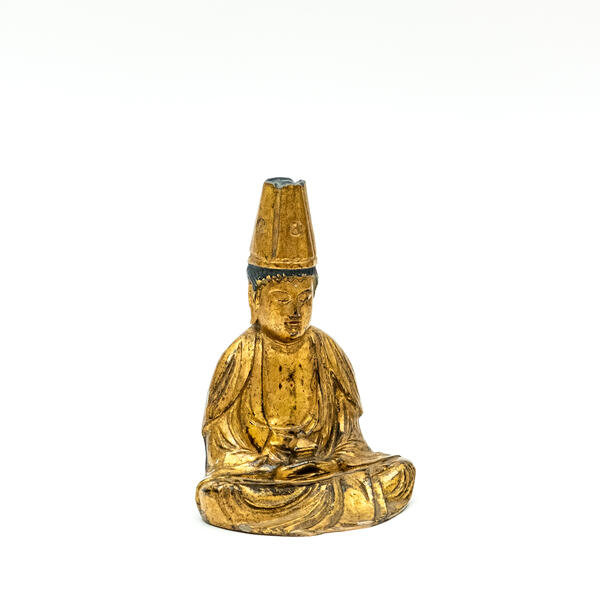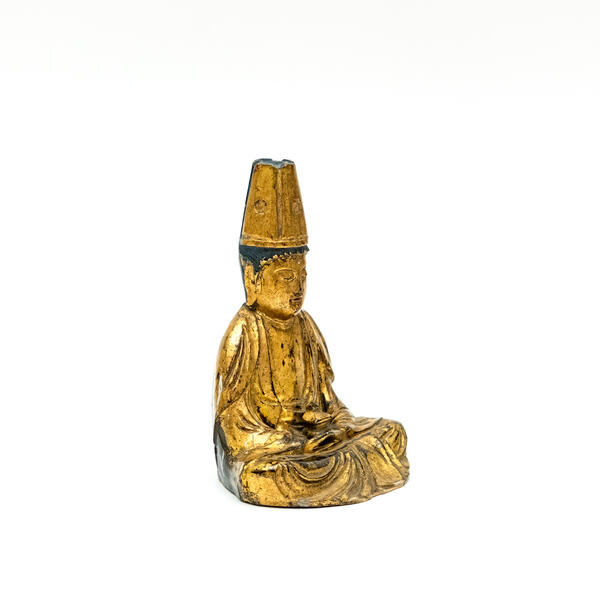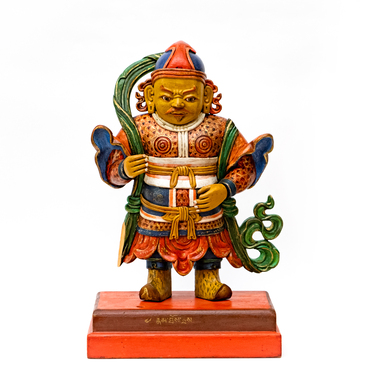The Japanese gilded statuette “Miroku Bosatsu (Bodhisattva Maitreya)” from the collection of the Sakha Republic National Art Museum is included in the section “Art of the East” and attracts attention with the subtlety and sophistication of the engraving.
Miroku (Maitreya) Bodhisattva is an “awakened hero” — a spiritual practitioner who has advanced far along the spiritual path, whose goal is to lead everyone to enlightenment. He is the coming Teacher of humanity, the Buddha of the coming world order. He is the Bodhisattva and Buddha of the new era, the golden age of truth and purity. The merciful deity Miroku was often depicted in golden color, since in Japanese culture gold symbolizes the sun. The Bodhisattva has half-closed eyes, downcast gaze and a barely noticeable quiet smile, which indicates a state of enlightenment. In his hands is an object that identifies him, a “stupa” — the symbol of Maitreya, who carries the stupa of enlightenment.
According to legends, during meditation, the Stupa of Enlightenment suddenly appeared on the top of the deity. Therefore, the Bodhisattva Miroku is often depicted with a stupa (architectural structure), which serves as a model of the Buddhist universe and expresses in perfect form the pure nature of the mind. The stupa symbolizes the goal of the Buddhist path — complete enlightenment. It means liberation from all disturbing emotions and the unfolding of the abilities of the mind, especially the perfect wisdom of the Buddha. Its main purpose is to help living beings purify themselves from negative influences and increase positive effects. A stupa is also a symbol of overcoming all obstacles on the path to perfection.
The miniature figure of the deity is perceived as
an elegant jewel and represents a wonderful Japanese version of Buddhist art.
The Bodhisattva is depicted in a sublime state of peace and inner
contemplation: he has a calm expressive appearance, a soft silhouette, and a
slightly bowed head crowned with a high headdress. The figure of the deity was
created according to the fundamental principles of Japanese art, embodying the
canon of oriental beauty and the ideal of harmony. The small figure, forming a
regular triangle, fascinates viewers with its rhythm of a balanced space and
the Hellenistic folds of the garment. It is evident that its creator had a good
command of sculptural volume and line as a means of expression: clothes gently
flow around the figure, executed in generalized and graceful forms. In the
Bodhisattva hands resting on the knees is a miniature Stupa monument. Maitreya
(Miroku Bosatsu) is the only Bodhisattva who is revered by all branches of
Buddhism. His figurines in clay, bronze, and wood are found in Buddhist temples
of the ancient capitals of Japan.





